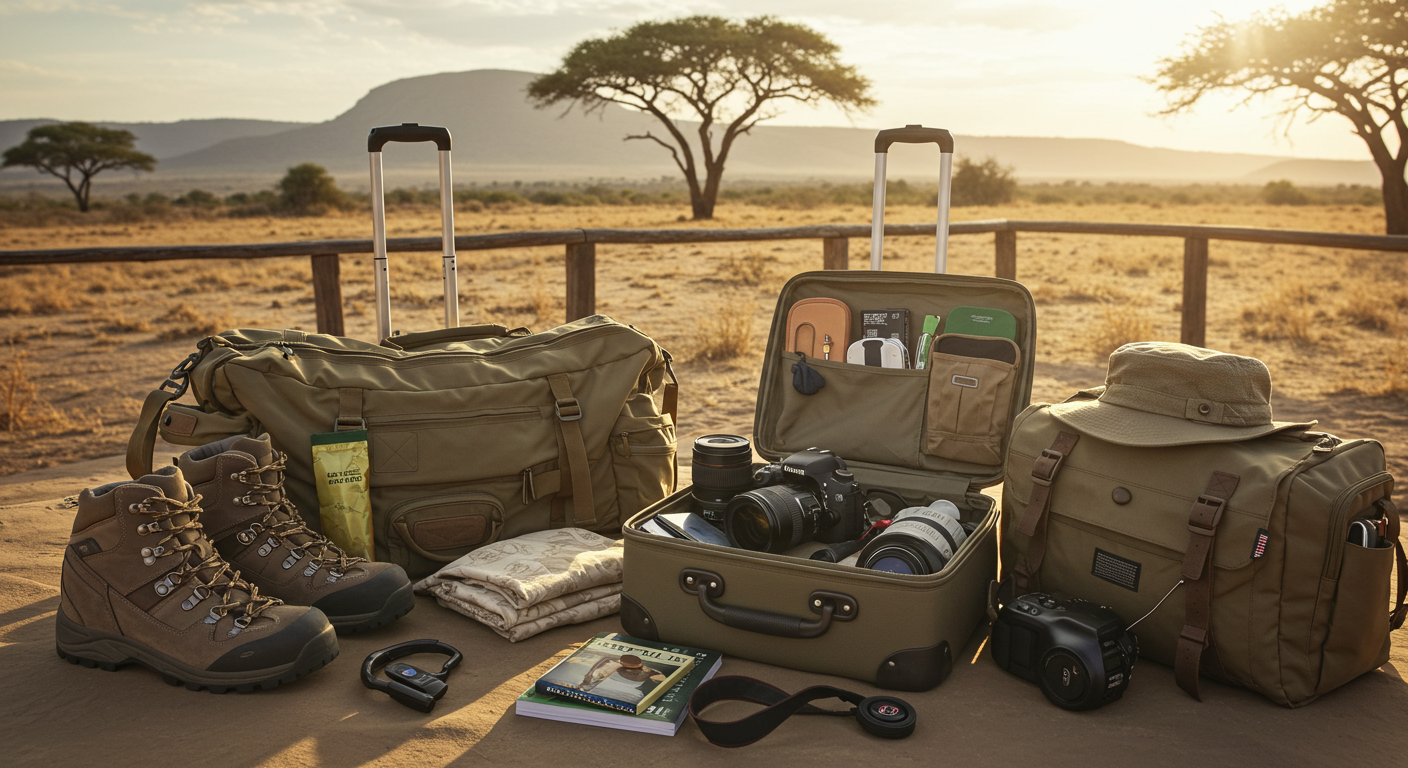Packing for Africa is not just about filling your suitcase with safari khakis and mosquito spray—it’s about preparing for a continent of incredible diversity. From the sun-scorched dunes of Namibia to the misty highlands of Ethiopia, the bustling cities of Lagos to the serene beaches of Zanzibar, Africa offers a wide range of climates, cultures, and experiences. Whether you're embarking on a safari, climbing Kilimanjaro, exploring ancient ruins, or island-hopping, this packing guide will help you travel smart, light, and respectfully.
1. Know Your Destination and Season
Africa isn’t a monolith, and neither is its weather. Packing right starts with knowing where you’re headed and during what time of year.
Southern Africa (South Africa, Namibia, Botswana): Summer is from November to March (hot and wet), winter from June to August (cool and dry).
East Africa (Kenya, Tanzania, Rwanda): Two rainy seasons—March to May and October to December.
West Africa (Ghana, Senegal, Nigeria): Hot year-round, but heavy rains from April to October.
North Africa (Morocco, Egypt): Mediterranean climate—hot summers and mild winters.
Tip: Always check local climate trends before you travel and pack accordingly.
2. Clothing: Versatile, Modest, and Layered
Pack light but strategically.
Essentials:
Lightweight, breathable fabrics (cotton, linen, quick-dry): perfect for the heat.
Long sleeves and pants: for mosquito protection and modesty in rural or conservative areas.
A warm layer: fleece or a light jacket for chilly nights or mountain regions.
Rain jacket or poncho: especially during the rainy season or hikes.
Swimsuit: for beach days or hotel pools.
Scarf or shawl: useful for sun protection, visiting religious sites, or chilly evenings.
For safaris: Neutral colors like khaki, beige, olive—bright colors can scare animals, and dark colors attract insects.
For cities: Comfortable and culturally respectful outfits. In many places, especially Muslim-majority regions, modesty is appreciated.
3. Footwear: Function Over Fashion
Bring:
Comfortable walking shoes: for urban exploration and light hikes.
Sturdy hiking boots: if you plan to trek or go on rugged safaris.
Flip-flops or sandals: for beaches, showers, or relaxing.
Pro Tip: Break in new shoes before your trip to avoid blisters.
4. Health and Hygiene Essentials
Stay healthy with these essentials:
Prescription medications: Bring enough for your entire trip, along with a doctor’s note.
First aid kit: Include pain relievers, band-aids, diarrhea meds (like Imodium), antiseptic cream, antihistamines, and rehydration salts.
Insect repellent: Preferably one with DEET or picaridin.
Sunscreen and lip balm: SPF 30+ is best.
Hand sanitizer and wet wipes: especially for remote areas or long road trips.
Reusable water bottle with filter: or water purification tablets.
Vaccination documents (like yellow fever): Some countries require proof of vaccination upon entry.
5. Travel Gear and Electronics
Pack smart tech and travel tools:
Universal power adapter: Africa has a variety of plug types.
Power bank: for charging on the go.
Headlamp or flashlight: great for lodges, camping, or rural areas.
Camera and extra memory cards: the landscapes and wildlife are incredible.
Lightweight daypack: for daily excursions.
E-reader or book: downtime entertainment.
Dry bag or ziplock bags: protect electronics and documents from dust or moisture.
6. Documents and Money
Secure your essentials:
Passport (valid for at least 6 months) and visa (if required).
Copies of important documents: printed and digital.
Travel insurance: highly recommended for health and emergencies.
Credit/debit cards and cash (preferably USD or EUR): Exchange rates and ATM access vary.
Tip: Use a money belt or hidden pouch for security.
7. Cultural and Environmental Respect
Be a thoughtful traveler:
No plastic: Some countries (e.g., Rwanda, Kenya) ban plastic bags.
Respect local dress codes: especially in religious or rural areas.
Pack reusable bags: for shopping or storing items.
Gifts or souvenirs: If visiting villages, small items like pens, notepads, or sweets for kids are appreciated—but avoid giving money directly.
8. Optional But Useful
Travel towel: quick-dry and compact.
Binoculars: for safaris or birdwatching.
Notebook or journal: document your adventure.
Phrasebook or translation app: especially if you’re traveling outside English- or French-speaking zones.
Snacks: energy bars or trail mix for long travel days.
Final Thoughts
Packing for Africa is about striking a balance between practicality, comfort, and cultural awareness. You don’t need to bring your whole wardrobe—just the essentials that allow you to adapt to the climate, terrain, and traditions of the places you’ll visit.
Whether you're traversing the Sahara, lounging on a Swahili coast, or sipping coffee in an Ethiopian highland café, being prepared will allow you to focus on the experience—not what’s missing from your bag.



